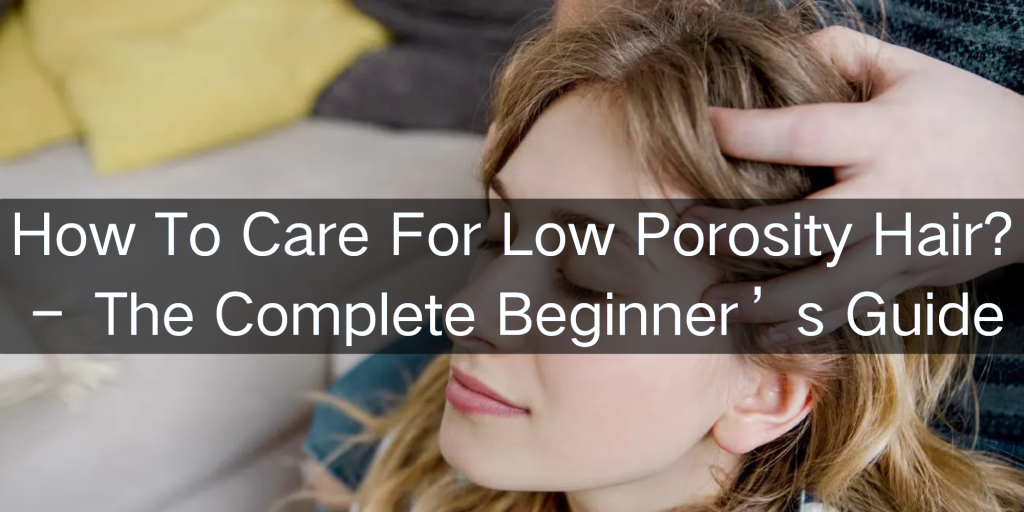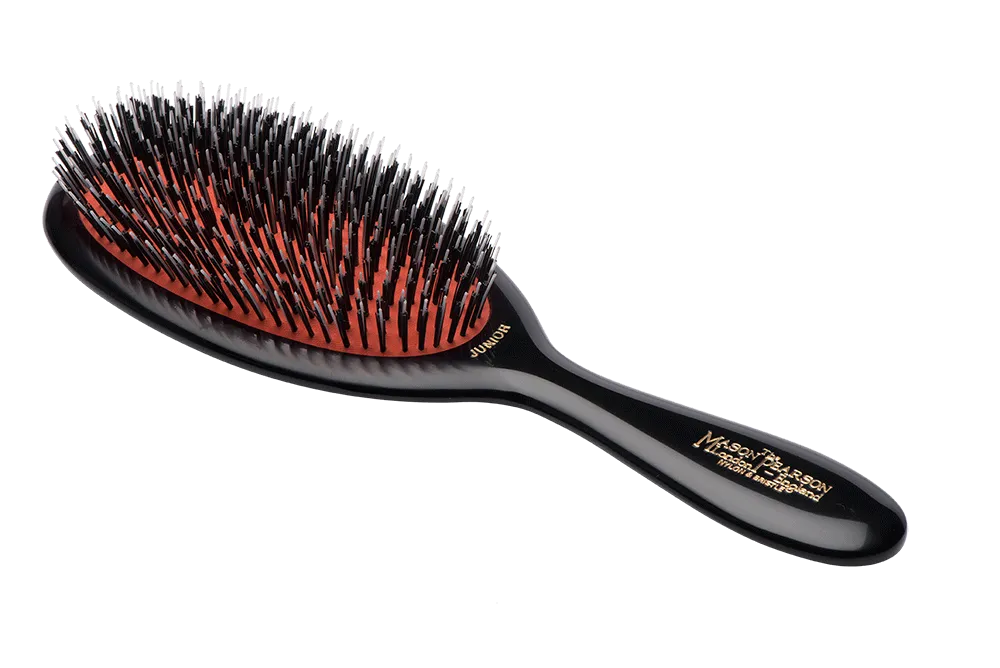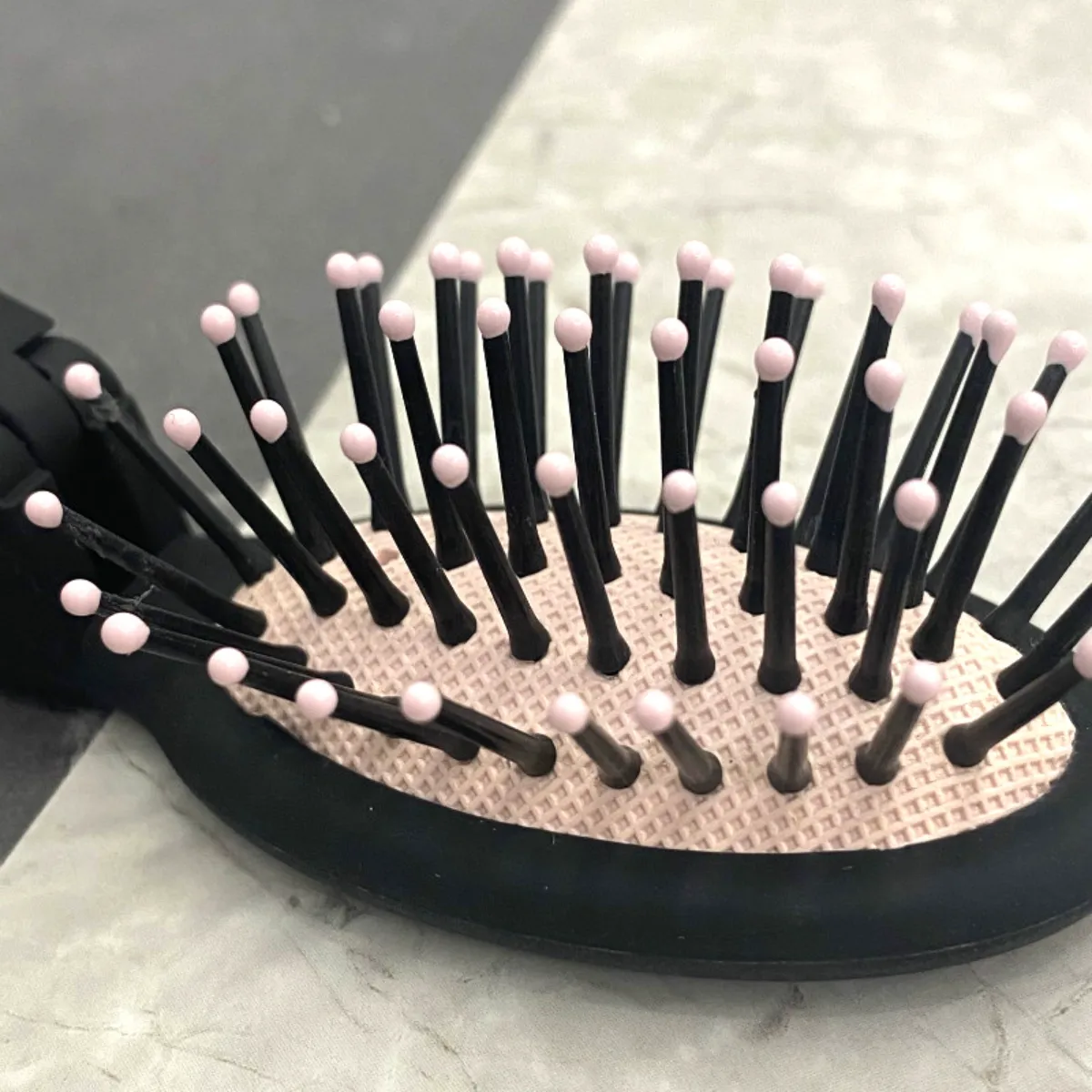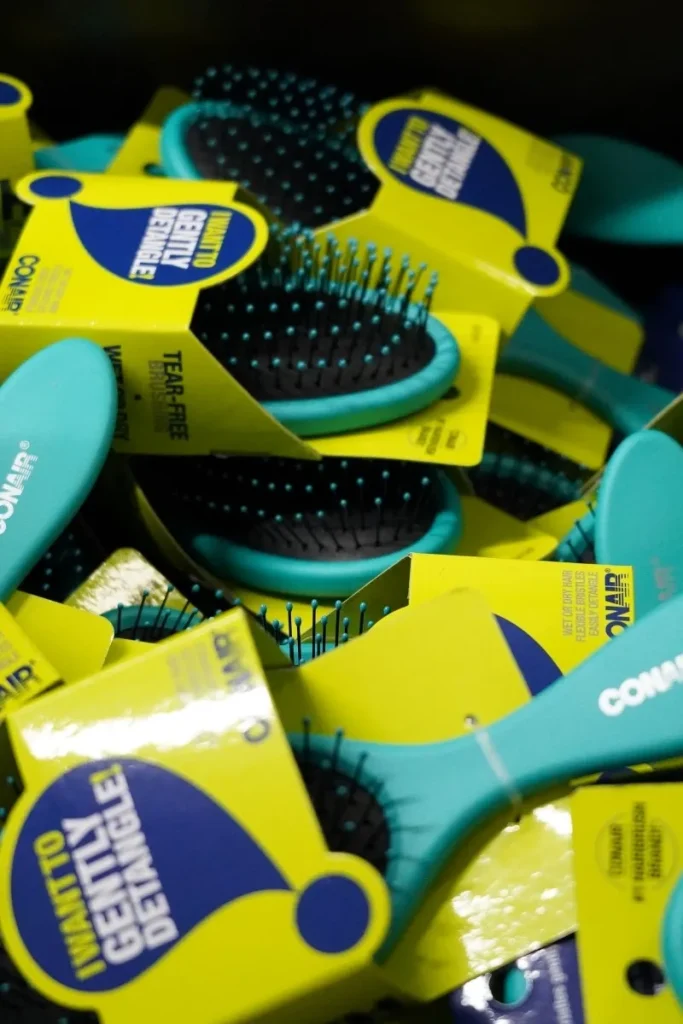Hair porosity has an impact on the ability of your hair to absorb and retain moisture. In case you have low porosity hair, your strands do not absorb moisture and products easily, so it is a little bit complicated to take care of it. This is why it is crucial to know how to care for low porosity hair. When you have the proper regimen, you do not have to deal with the buildup, dryness, and frizz. This is a full novice-level guide to what low porosity hair is, and what problems it presents, as well as step-by-step advice to help you maintain healthy, hydrated, and manageable hair.
What is Low Porosity Hair?
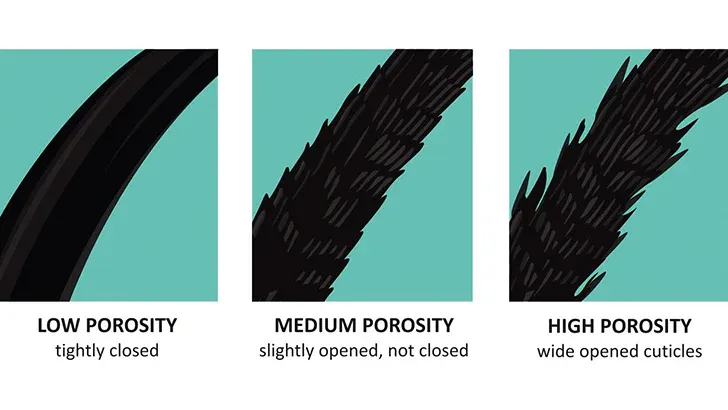
Low porosity hair is the kind of hair where your cuticles are in a tight pack and on top of each other, so moisture and products have trouble penetrating. You may find that the water drops on your strands or your product just sits on top. Scientifically, the external layer of your skin (also known as cuticle) serves as the roof shingles without holes and prevents the penetration of water and nutrients into the cortex. In case of low porosity hair, this is normally genetically induced. To ensure that your hair can absorb moisture correctly, you will have to apply heat or light-weighted, pH-balanced products.
Want to learn more about low porosity hair? Visit now: What Is Low Porosity Hair and What Does It Mean?
What Is Low Porosity Hair and What Does It Mean? – Explore Insights
Challenges in Caring for Low Porosity Hair
Difficulty of Moisture Penetration
When you have low porosity hair, your cuticles are tightly closed, and water and oils can hardly get into the strand. They do not always absorb, even when you use hydrating products they just remain on the surface.
Product Accumulation
You might have found that creams, butters or oils are easily accumulated. Your hair does not absorb, so the heavy products accumulate on each other with time, causing dullness and clogged strands.
Over-conditioning Risk
You would think that your hair is drier and needs more moisture. However, when you overuse it, your hair may feel wet or soft indicating moisture saturation. What you want is moderation, not overdoing it.
Dryness With Use of the Product
Hair that feels dry does not necessarily indicate that you are not moisturizing as much as you should. It could be that your products are not penetrating. Open the cuticles using heat or steam, and facilitate absorption.
Curl Definition and Frizz Management
Lack of moisture retention may influence curl pattern and cause frizz. Soft styles and methods such as lightweight, water-based stylers can assist in defining curls and reducing puffiness.
How to Care for Low Porosity Hair – Step-by-Step Routine
Low porosity hair requires careful treatment to remain in a healthy, hydrated and free of build-up state. This is a comprehensive, effective regimen that you can use to improve your results.
A. Weekly or Regular Wash Day
1. Pre-Wash Preparation
Begin by rubbing a light oil such as grapeseed or jojoba onto your scalp. Apply it with fingertips to massage and increase blood circulation and loosen dirt. You can then cover your head with a warm towel or a heat cap. It is this gentle warmth that aids in opening up the cuticle, allowing your hair to take in moisture and treatment.

2. Cleansing
Every week or every other week, use a sulfate-free, pH-balanced clarifying shampoo. This assists in eliminating product build up which is likely to accumulate on low porosity hair. In the middle of the week, when your hair is dry, a lightweight cleansing conditioner can be used to co-wash. This cleanses your hair without removing essential oils.
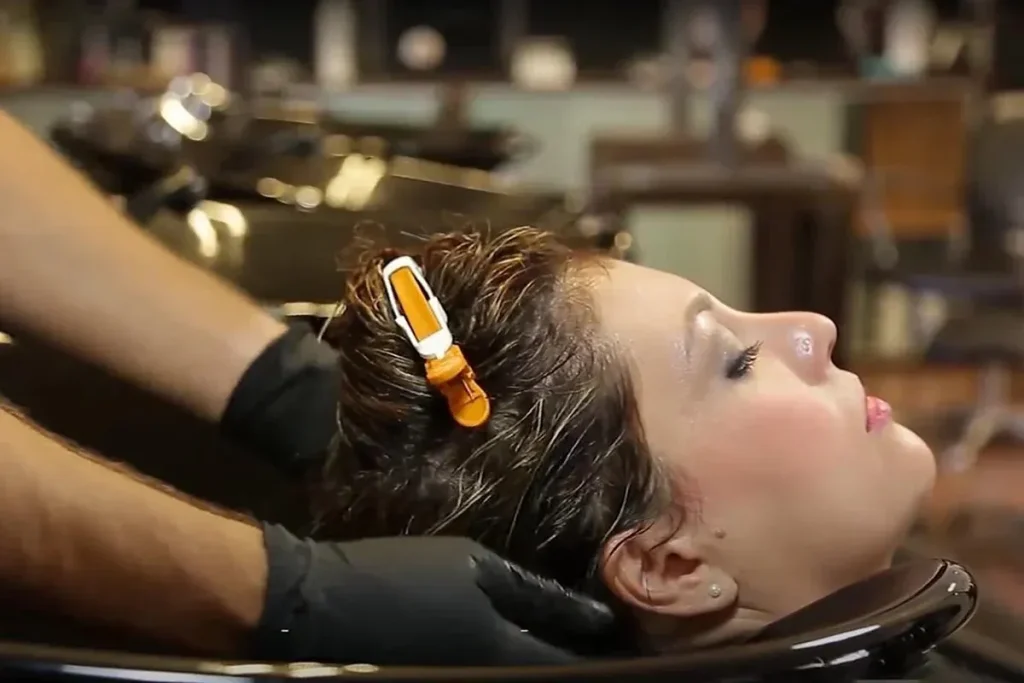
3. Deep Conditioning
Select a deep conditioner that is moisture-rich, and low in protein. Use abundantly to roots and ends. Then, warm up your hair using a hooded dryer, thermal cap or steamer. This softens the cuticles and helps the conditioner to enter deeper. Once a week deep conditioning is recommended.
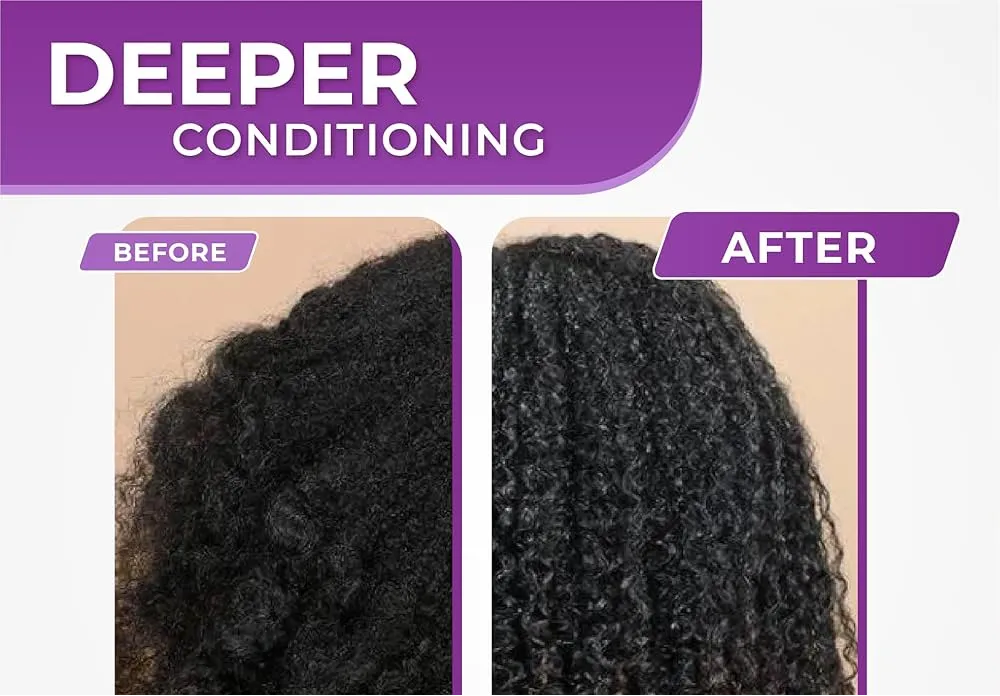
4. Detangling
When your hair is wet and dripping with conditioner, brush it. This reduces wastage and facilitates the process. Beginning at the ends, work up with your fingers or a wide-tooth comb. Low porosity hair can snap easily when it comes to brushing dry hair, so this must be avoided.
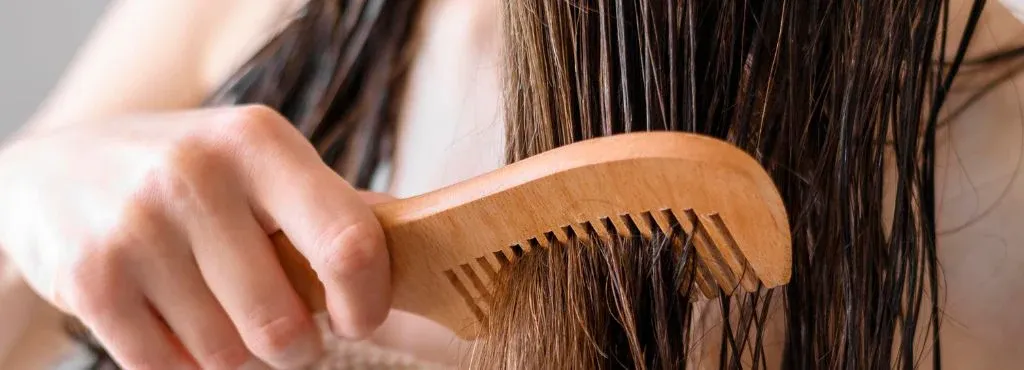
B. Post-Wash Routine
1. Leave-In Conditioner
Use a water-based, lightweight leave-in conditioner. Your hair does not require thick creams or high protein compositions after shampooing. Highlight on hydration without making your hair heavy. This will prime your strands to the next procedures.
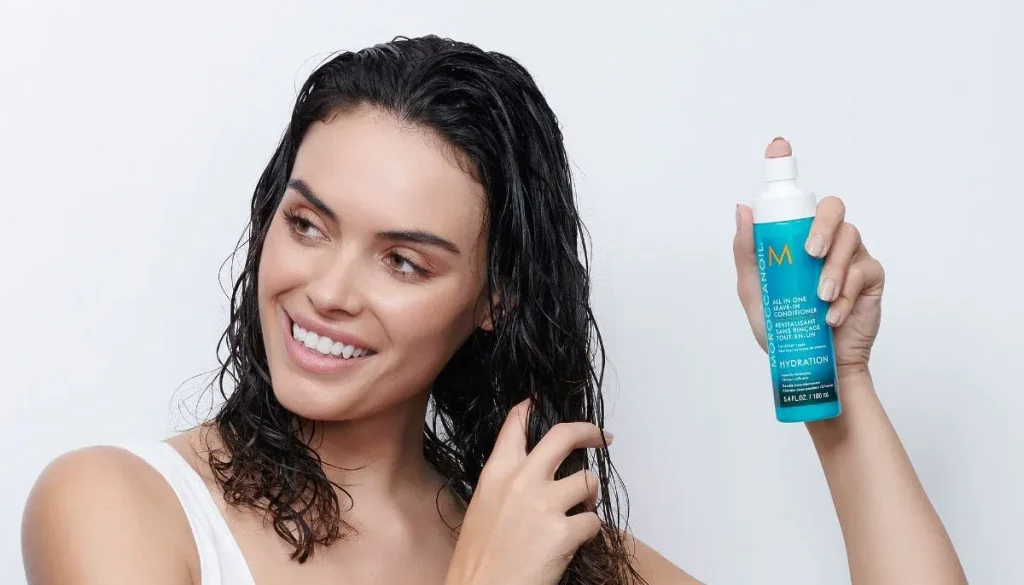
2. Moisturizing + Sealing
Apply a light cream in case your hair is dry or requires some additional softness. Next, trap in the hydration with a light oil such as argan or jojoba. Experiment with the LCO (Leave-in, Cream, Oil) and LOC (Leave-in, Oil, Cream) to find out which suits your hair. The trick is to seal in moisture without sealing up the cuticle.
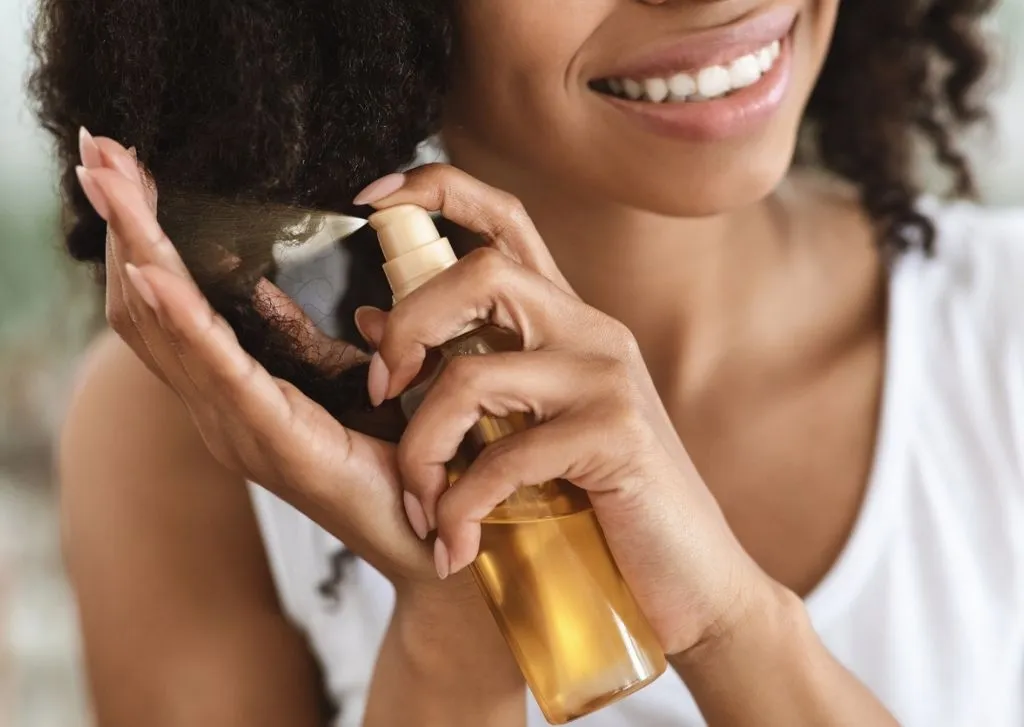
3. Drying
Air dry your hair as much as you can. In case you are pressed on time, use a blow dryer with a diffuser at the lowest heat level. Avoid coarse towel-drying and excessive heat, which lead to frizz, and leave your hair strands weak and damaged.
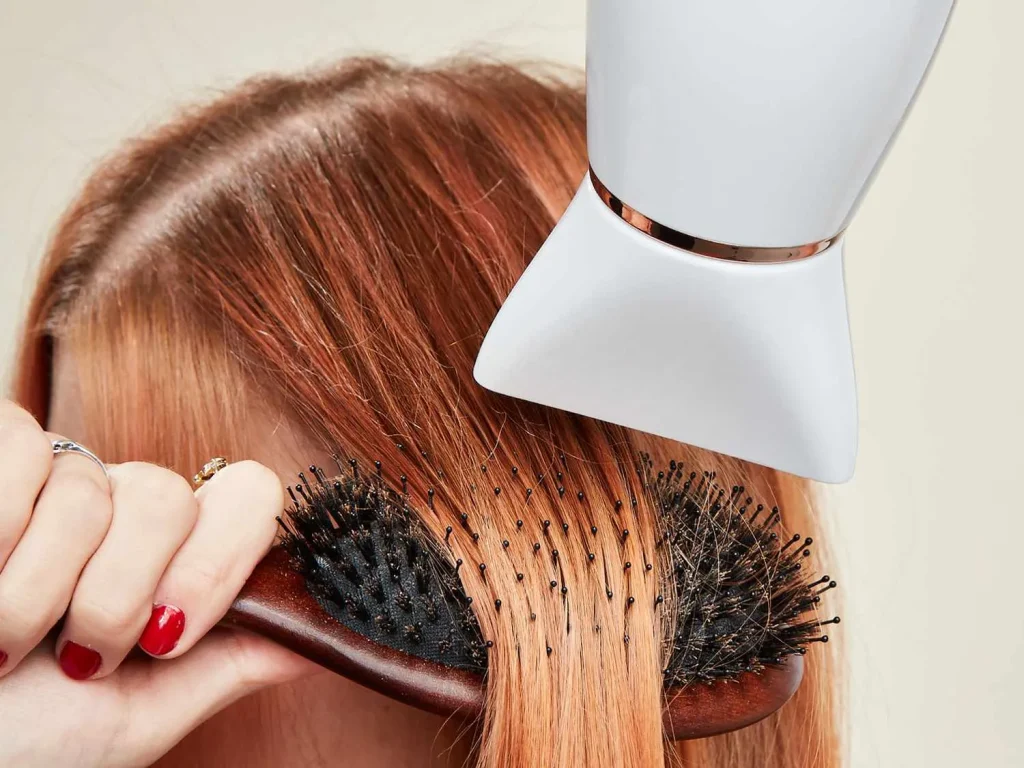
C. Daily or Midweek Maintenance
1. Hydration
Even when low porosity hair is moisturized on a wash day, it might feel dry in the middle of the week. Revive your locks by spraying them with water-based spray or aloe vera mist. Hydrosol sprays are fantastic to hydrate with no deposits. Do not reapply heavy oils or butters- they will just lie on your hair.
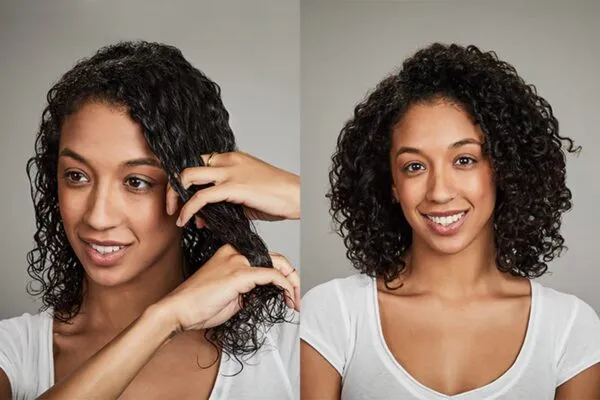
2. Scalp Care
Your head should be taken care of as much as your hair. Massage your scalp daily and gently to encourage blood flow and healthy growth. It should be kept clean and free of product or thick oils or edge control products. In case you need it, perform a mid-week rinse or scalp refresher spray.

How to Care for Low Porosity Curly Hair – Step-by-Step
Low porosity curly hair retains dryness. The coiled formation reduces the movement of moisture and enhances shrinkage. With your cuticles lying down and snug, the products do not enter as easily. You will require warmth, moisture, and products that do not load on your hair.
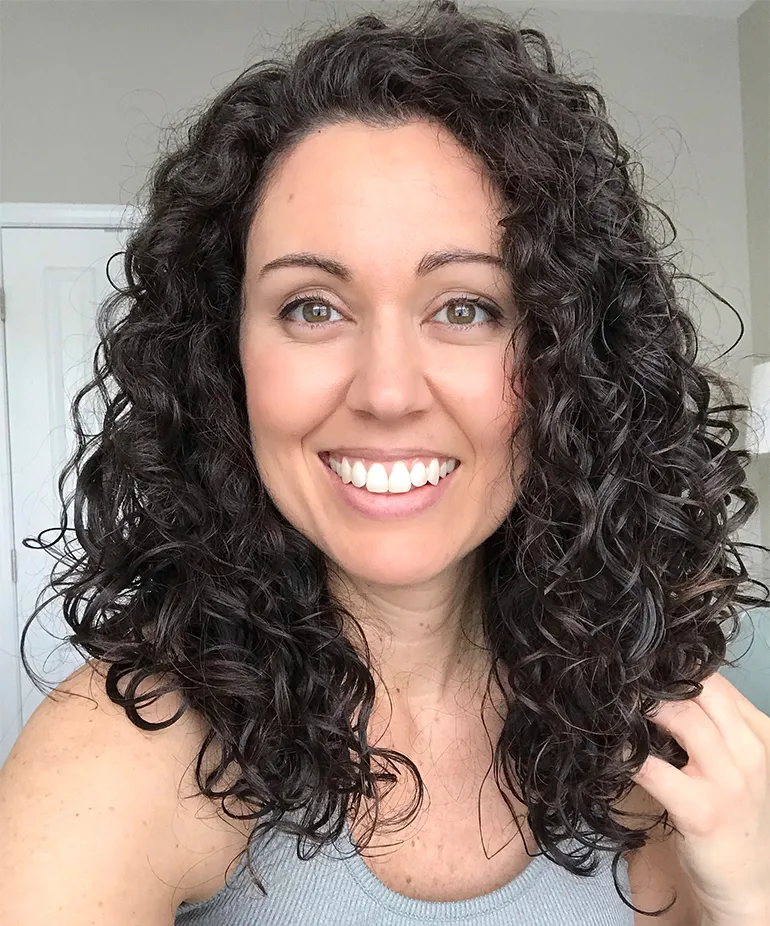
Wash Day for Curly + Low Porosity Hair
1. Pre-Wash
Apply a lightweight oil such as argan or grapeseed to your scalp before washing it. This enhances blood circulation and conditions your hair. Add some light heat, such as a warm towel or cap, to open the cuticle. When your hair is exceptionally dry, a pre-poo treatment with heat-friendly oils will do the trick.
2. Shampoo
Clear buildup with a sulfate-free, clarifying shampoo. Hair with a low porosity accumulates residue quickly. Rinse weekly or in between. Do not co-wash too often- excess conditioner without a wash will cause a build-up on your hair.
3. Deep Conditioning
Use heat to deep condition each wash. You may use a thermal cap, or sit under a hooded dryer. Select formulas that are high in moisture rather than protein. You want to be hydrated, not hard.
4. Detangling
Brush only when your hair is wet and loaded with conditioner. This minimizes breakage and maintains your curl pattern. Finger detangling is the best-combs have a tendency to catch your curls and get frizzy.
Styling + Curl Definition
1. Leave-In and Moisture Layering
When your hair is damp, use a light weight, water-based leave in conditioner. Then apply a fine mist spray and layer on additional hydration but do not overwhelm your strands. You desire moisture-not the weight of the product.
2. Styling Products
Lock in moisture using a light curl cream, mousse or gel. Seek choices that contain humectants rather than heavy oils or butters. You should not layer too many stylers or it will only cause build-up and lifeless curls.
3. Drying Techniques
To dry the hair faster without ruining curls, use a diffuser with low heat. Or, air dry, when you have leisure. At night, pineapple your curls- scoop up your curls on the crown of your head.
4. Refresh Routine
In the middle of the week, rehydrate your curls using a water and leave-in combination. Spritz, scrunch lightly, and air dry. Avoid intensive re-styling products. They will load you down and prevent moisture in the next wash.
Best Products for Low Porosity Hair
Shampoos
Begin by using a mild clarifying shampoo to cleanse without drying your hair. In hard water localities, a chelating shampoo should be used once a week. It aids in the dissolution of mineral deposits which do not permit the entry of moisture into your strands. Never neglect to rinse.
Conditioners
Select deep conditioners that are light and heat activated. These are most effective when you use soft heat by steaming or with a heat cap. Choose silicone-free products to prevent the film on products that may inhibit hydration. Find ingredients such as glycerin or aloe vera.
Leave-In Products
Water based leave-ins consisting of humectants such as panthenol or honey will work best. Avoid thick butter-based products- as they settle on the hair and block up. Use your leave-in in layers to lock in the moisture.
Oils and Butters
Rub light oils such as jojoba, argan or sweet almond to seal your ends. These are similar to natural sebum and will not drag your hair. Avoid thick butters such as shea butter or coconut oil particularly in low temperature climates, they solidify on the hair shaft.
Tools and Techniques
Detangle with a wide-tooth comb or with your fingers. An absorption enhancer such as a heat cap or a warm towel can be used. Always have a fine mist spray bottle to stay refreshed and hydrated during the day.
Ingredients to Look for and Avoid
Beneficial Ingredients
Make sure that the ingredients in the products you use allow moisture to penetrate your tightly packed cuticles. Glycerin is a very good humectant because it attracts water to the shaft of the hair. Aloe vera is not only hydrating but also does not load the scalp. Panthenol (provitamin B5) enhances moisture and shine. Cetrimonium chloride is a lightweight conditioner and detangler assisting you to control buildup and frizz with ease.
Cautionary Ingredients to Use
You must be choosy in some ingredients. Thick proteins such as keratin or wheat protein can make your strands rigid and break it up when used excessively. Coconut oil is a little bit of a trickster, it is good on some people but it just lies on the hair and prevents moisture absorption in other people. Silicones, particularly non-water soluble silicones can leave residue with prolonged usage. Clarify on a regular basis when you use them. Try to test your hair reaction. Something that works with one person with low porosity hair may not work on you.
Natural and DIY Treatments
Homemade Deep Conditioners
Mix avocado, aloe vera, and honey to make a thick deep conditioner that is moisturizing. Use it on wet hair and leave it on 30 minutes. The duo enhances hydration and softens low porosity hair in a natural way.
Warm Towel DIY Steam Treatment
After applying a conditioner, wrap your hair with a warm, damp towel. Steam allows the cuticle to open, so the moisture penetrates better. Reheat the towel when necessary and let it stay on between 15-30 minutes.
Apple Cider Vinegar Rinse
Dilute one part of ACV with three parts of water and rinse hair with it after shampooing. It neutralizes the pH, increases shine and clears up buildup. After a few minutes, wash properly to prevent the presence of residues.
Detoxifying Bentonite Clay Masks
Mix the bentonite clay with water or ACV to create a paste then apply to wet hair. Leave 15 20 minutes to remove toxins and buildup. Wash thoroughly, then a light conditioner.
Seasonal Low Porosity Hair Care Tips
Spring/Summer Care
During spring and summer, lightweight hydration should be emphasized. Apply water-based leave-ins and avoid thick humectants such as glycerin when your hair bloats in humidity. The cuticle is opened by steam or warm heat. Use light creams and those that are absorbed easily. You must put products on wet, not dripping hair because it penetrates better.
Fall/Winter
In colder months, switch toward moisture locking. Apply thicker creams or light oil after washing. Protective styles such as braids can help to minimize dryness. Condition with heat or steam regularly to allow better absorption. Cover your hair in the open air to protect it in cold and dry weather.
Protective Styling for Low Porosity Hair
Perfect Protective Styles
When dealing with low porosity hair, select styles that minimize manipulation and lock in moisture. Updos, twists, braids, and buns will be effective. These styles keep your ends hidden and do not break. You must not use tight or heavy styles that strain your strands. Make it light and smooth to help your hair structure.
Scalp Accessibility and Moisture
Low porosity hair requires permeable hairdos that enable you to reach your scalp. Ensure that your scalp is clean and moisturized. To prevent accumulation, use light oils or water-based sprays. When you do your style, leave sections that allow your scalp to breathe. This assists you to keep your scalp healthy without blocking pores.
Maintenance and Duration Tips
Depending on your hair type and lifestyle, protective styles must last between 1 and 4 weeks. Preparation is key to styling your hair always clean, condition and moisturize. When in the style, splash your scalp with light sprays every few days. Remember to sleep in satin or silk bonnet to avoid dryness. Continuously monitor the state of your hair, thus when to re-do or re-moisturize.
Common Mistakes to Avoid
Over-Moisturizing Without Clarifying
You may believe that the more moisture, the healthier the hair would be, however, this does not necessarily apply to low porosity hair. When you fail to clarify, product layers begin to accumulate. This prevents moisture instead of sealing it in. First, clarify to reset your strands and make your routine work more effectively.
Overuse of Protein Treatments
Protein is needed, but excessive amounts will make your hair stiff and brittle. Low porosity hair is already resistant to absorption, and therefore excess protein accumulates very fast. When you experience dryness or breakage, lessen the amount of protein you use and emphasize light moisture-based treatment.
Avoiding Steam or Heat
You can leave out heat to preserve your hair, but low porosity hair requires low temperatures to seal the cuticle. Without it, products only lie on top. Apply a heat cap, steamer or a warm towel to assist your treatments in absorbing well.
Using Too Many Products with Buildup Potential
Adding heavy creams, oils, and butters might bring your hair down. These ingredients usually lie on the surface rather than penetrating. Use water-based products and keep it simple to prevent filled strands.
Neglecting Ingredient Labels
You can easily forget about what is inside your products. However, with low porosity hair, the most important thing is label reading. Do not use silicones, mineral oils, and non-water-soluble substances. You should always use products that have light-weight, nourishing formulas that can absorb in your hair.
Conclusion
To restore hydration, shine, and strength, the first step is to learn how to care for low porosity hair. You require a soft and steady hand- particularly when working with low porosity curls. Pay attention to light products, frequent clarifying, and thermal treatment of hair. The trick is to note the reaction of your hair and change your routine. Be patient, trial and error, and keep in mind that your hair will be healthiest when you listen, change with it, and treat it with respect.
FAQs
Is Coconut Oil Good for Low Porosity Hair?
Coconut oil is not the ideal oil to use in low porosity hair. It has big molecules that usually are on the surface rather than being in your strands. This may cause buildups, dryness or even stiffness. You can do better by applying lighter oils such as argan, grapeseed, or sweet almond to provide moisture and shine.
Can Low Porosity Hair Grow Fast?
Yes, it may grow quickly, and it does, depending on the health of the scalp and genetics. When you establish the correct routine, regular clarification, proper moisturization and prevention of build-up, you provide your hair with the best possible chance of success. Concentrate on retention rather than the rate of growth.
Can Low Porosity Hair Be Dyed or Bleached?
Low porosity hair can be dyed or bleached, although you have to be more careful. The close cuticle layer prevents absorption of chemicals, thus avoid harsh heat and bond protecting treatments. A professional should always be consulted to obtain safe results.
Are Co-Washes Suitable for Low Porosity Hair?
Co-washing might be effective, yet it may not be. Co-washes may leave residue in the long run since low porosity hair is easy to build up. Alternate clarifying sulfate free shampoo to maintain a clean scalp and balanced hair.

